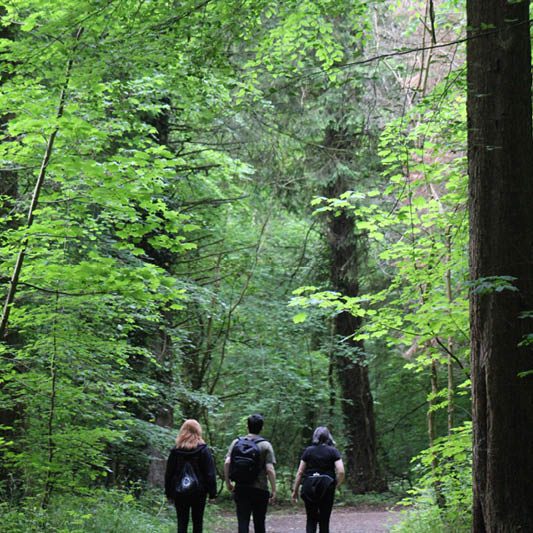The Mounbellew Bioblitz was a fantastic opportunity for people to observe and learn more about some of the flora and fauna found in the area. During the course of the activities on the 27th of May, a wide range of birds were recorded including some rare and threatened species such as red grouse.
The day started with a dawn chorus walk at the Mountbellew Forest. Nine of us met up at the forest car park at 05.00 am and even before we started the walk, the air was filled with bird songs and calls. Blackbird, robin and chaffinch were amongst the first birds to be recorded and we soon added wren, dunnock, rook and woodpigeon to the list. A cuckoo could also be heard calling in the distance.
As we started the walk into the forest, a pair of red squirrels were observed scurrying amongst the trees. We soon heard and got excellent views of goldcrest, which is Irelands smallest bird, weighing the same as a 20-cent coin. Coal tit, great tit and blackcap were also heard. Some members of the group also caught a glimpse of a red fox running in a nearby field.
We stopped on the edge of the Mountbellew Lake, where we hoped to see some of the resident water birds. After several minutes of scanning, we recorded moorhen, mallard and grey heron. Mute swans would later be recorded at the lake by Pat Roberts. A sedge warbler was heard calling amongst the reedbeds, a summer visitor to Ireland which migrates from sub-Saharan Africa. Two other well-known summer migrants, swallows and sand martins, were also observed catching flies above the lake.
As we continued the walk, more species were added to the list, including long tailed tit, jackdaw, hooded crow and chiffchaff. We all got terrific views of a song thrush singing from the top of a tree by looking through a telescope provided by Ornithologist Peter Capsey. As we made our way back to the car park, a buzzard was observed flying low across the forest path. A great way to conclude a successful dawn chorus walk!
After gathering at the Holy Rosary College, a few of us decided to visit the Carrownagappul Bog. With a few of the MKO Ecologists present, the aim was to record some of the flora and fauna found in the bog. The Carrownagappul Bog is recognised as a Special Area of Conservation (SAC) due to the good quality active raised bog and the presence of rare species such as the red grouse.
It didn’t take long for us to observe skylark and meadow pipit, both of which were seen in good numbers. The skylarks especially were impressive to see as they were performing their well renowned display flight, where a male bird will hover high in the sky and sing for several minutes at a time. Other small birds added to the list included pied wagtail, stonechat, linnet and red poll.
Some of us suddenly heard the unmistakable call of a red grouse nearby and a male bird was soon spotted flying low across the bog. As only one person managed to catch a glimpse, some of us decided to walk along a track near where the grouse was last seen. A male kestrel was soon observed hunting, but our attention was quickly diverted to a male red grouse once again flying across the bog just a few meters away from the track. An incredible moment! It was great that some of us got to observe this rare bird before the guided walk on the bog lead by National Parks and Wildlife Service peatland specialists.
The evening aquatic survey at the Mountbellew Lake and Castlegar River offered potential to record more bird species associated with rivers and lakes such as kingfisher and grey wagtail. Local wildlife photographer Declan Horan noticed a treecreeper on a nearby tree and managed to get some excellent images. While we had no luck with seeing a kingfisher, a grey wagtail was observed on the river.
To conclude, a total of 47 bird species were recorded during the Bioblitz activities throughout the day. Definitely worth the early morning start!



